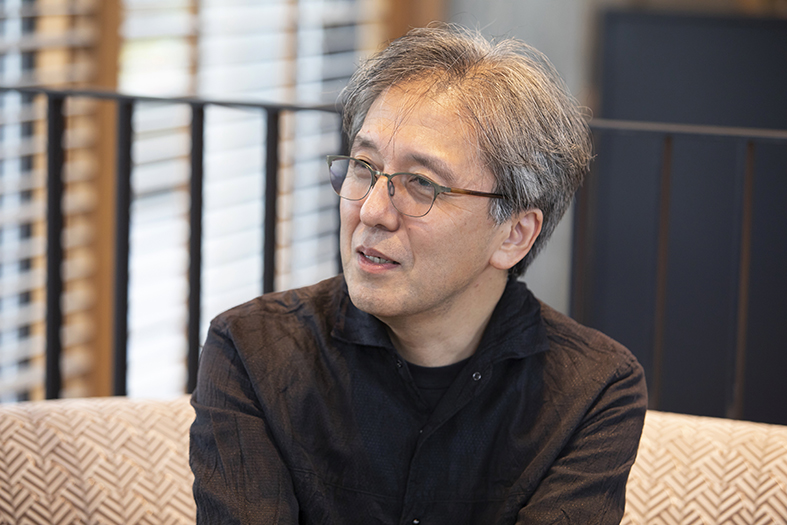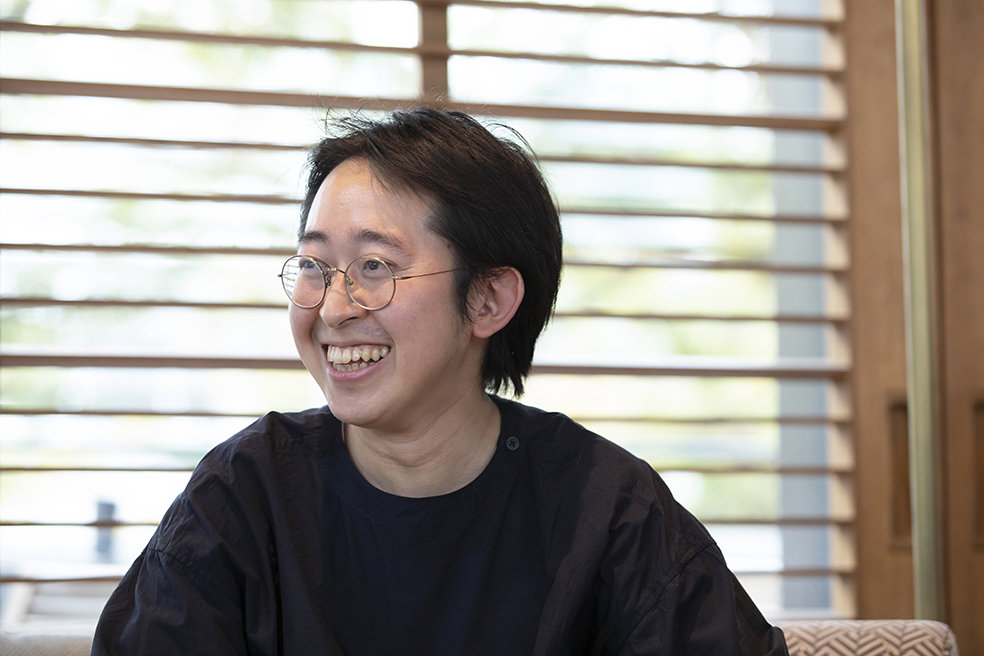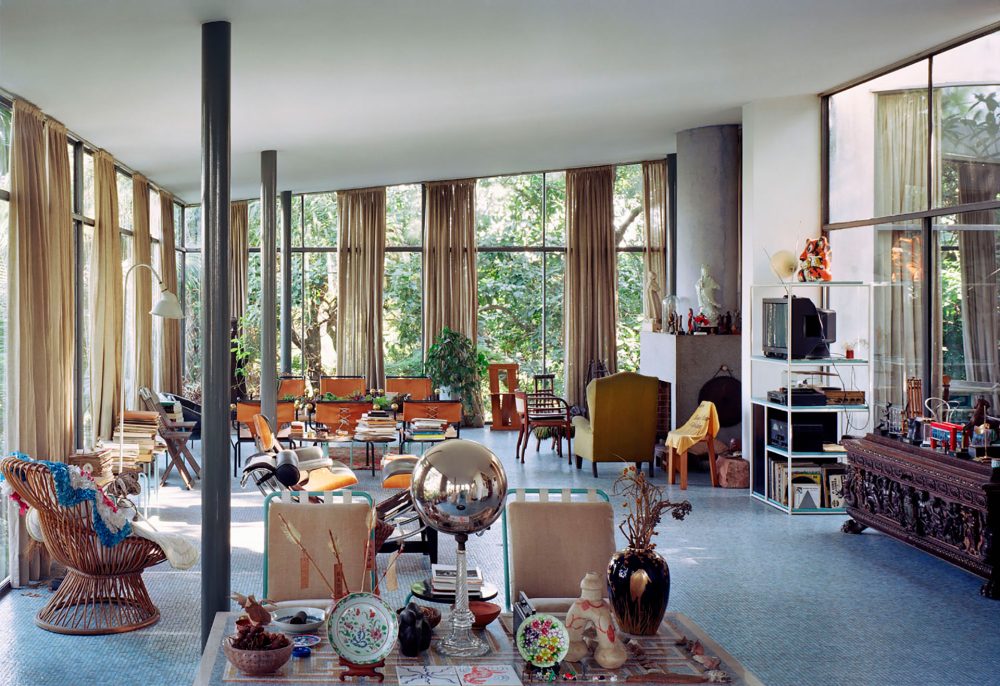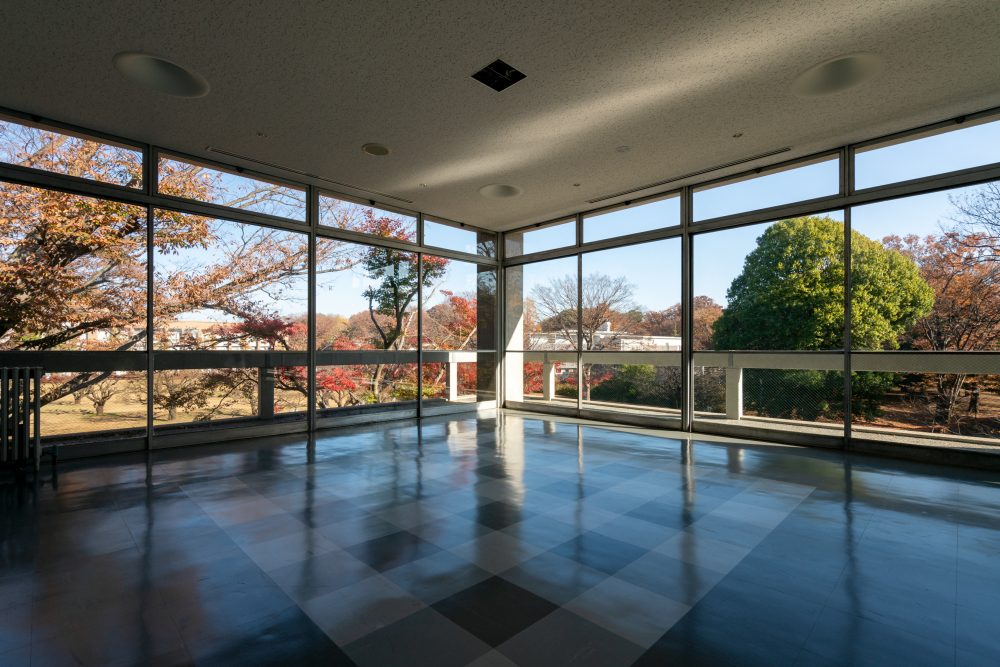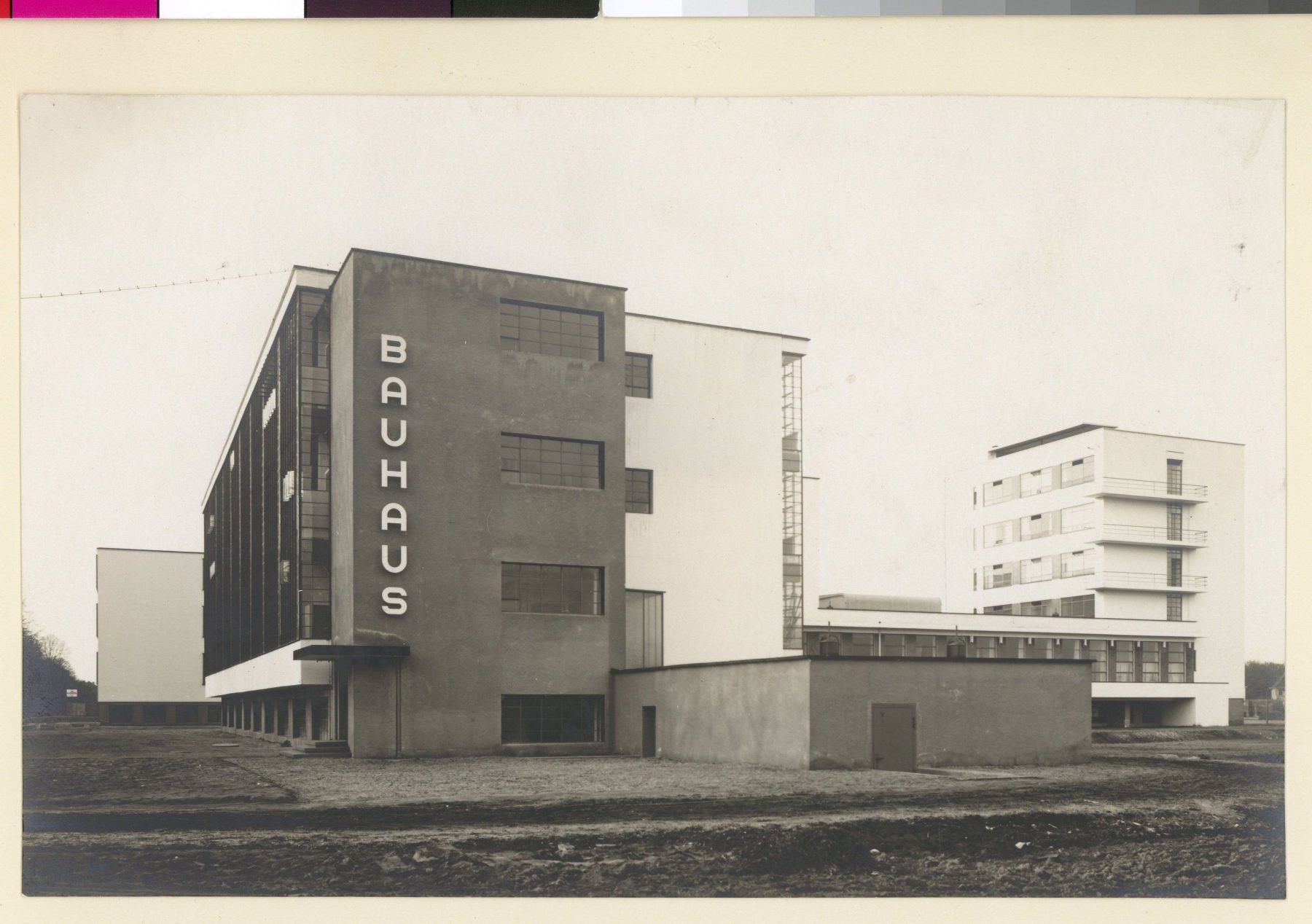
The Bauhaus and Its Influence in Japan
09 Jul 2021
The Bauhaus, founded in 1919 in Weimar, Germany, laid the foundations for modern design with its innovative curriculum that embraced the abstract and constructivist trends of the time. Despite operating for only 14 years before being shut down by the Nazi regime, its influence continues to be felt across various creative disciplines including not only architecture but also graphic design, photography, and product design.
In the recent years surrounding the centennial of the Bauhaus’ founding, there has been renewed worldwide interest in reexamining the school’s historical significance. In Japan, an exhibition focused on the Bauhaus’ educational system and its international influence titled Bauhaus Imaginista: Corresponding With was held at The National Museum of Modern Art, Kyoto in 2018.
Jin Motohashi, an assistant curator at the museum and one of the exhibition’s organizers, spoke with Hiromitsu Umemiya, a fellow architectural historian and long-time researcher of the Bauhaus’ reception in Japan, about what the Bauhaus was and the impact it has left on Japan.
A School Building that Broke with Convention
The Bauhaus offered courses not only in graphic and product design but also in dance and theatre. How was architecture positioned within its exceptionally diverse curriculum?
Jin Motohashi There are various theories about the origins of the Bauhaus’ name, but the dominant theory is that it is a reference to the word “bauhütte”, which translates to “construction hut”. If you look at the Bauhaus Manifesto that was on display at the beginning of the exhibition, you will see that it has a woodcut of a Gothic cathedral on its front cover.
Constructing a Gothic cathedral involved bringing together various specialists, such as masons, sculptors, painters, and surveyors, and the bauhütte was where they would gather. It is understood to have represented the ideal model of the kind of place that the Bauhaus sought to become. The manifesto lays out the Bauhaus’ aim to unite the arts through architecture, which intrinsically involves a variety of trades, and its vision to become a school that offers a multidisciplinary creative education under one roof as a means of achieving this.
-

The Bauhaus Manifesto, published at the time of the school’s founding by its first director, Walter Gropius. Walter Gropius (text) and Lionel Feininger (drawing), Programm des Staatlichen Bauhauses in Weimar [Program of the State Bauhaus in Weimar], 1919. Nakanoshima Museum of Art, Osaka.
The Bauhaus Building, built in Dessau in 1926 to the designs of the school’s first director, Walter Gropius, is well known as an emblematic work of Bauhaus architecture. What was so innovative about the building?
Hiromitsu Umemiya I would say the way it integrates the school’s different functions and forms into a single composition. The building has three main components—a workshop wing, studio wing, and vocational school wing—and each has been given a distinct appearance. The workshop wing has flat, full-surface glazing; the studio wing has regularly arranged windows and balconies; and the school wing has ribbon windows. These wings are connected into a whole by the administrative wing, which is raised on pilotis, and by the low-lying auditorium wing.
Back then, the standard practice for architectural composition had been to pack the required functions into a symmetrical plan and elevation, so you can imagine how refreshing the new sense of unity this building achieved through the use of asymmetry and counterbalancing must have felt at the time.
-
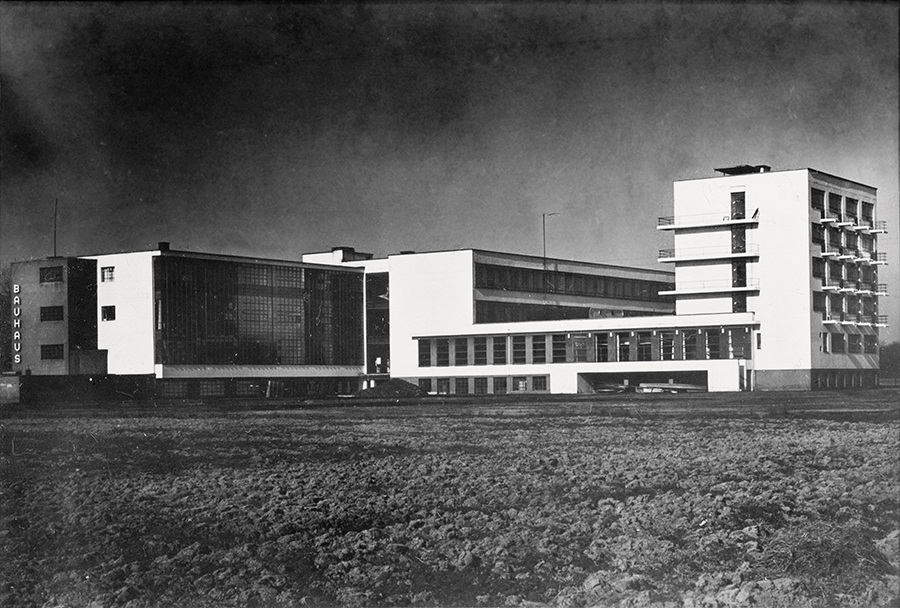
The glass curtain-walled workshop wing (pictured left), ribbon-windowed vocational school wing (center rear), and punch-windowed studio wing (right). Lucia Moholy, Bauhaus Building, Dessau, 1925–6.
JM Adding to that, I have a feeling that people back then perceived the building very differently from how we do today. This occurred to me when I saw a picture of the school shot by Iwao Yamawaki, who was an architect and one of the Japanese international students studying there at the time. I think when people talk about the building, they tend to use pictures taken from the south side that show the “BAUHAUS” lettering arranged vertically on the façade. That shot illustrates well the way the non-loadbearing curtain wall attaches to the concrete structure and the way the building extends out horizontally.
However, if you look at Yamawaki’s photograph, you will see that it shows the other end of the workshop wing, where the glass curtain wall wraps around the corner to cover two sides of the building.
-
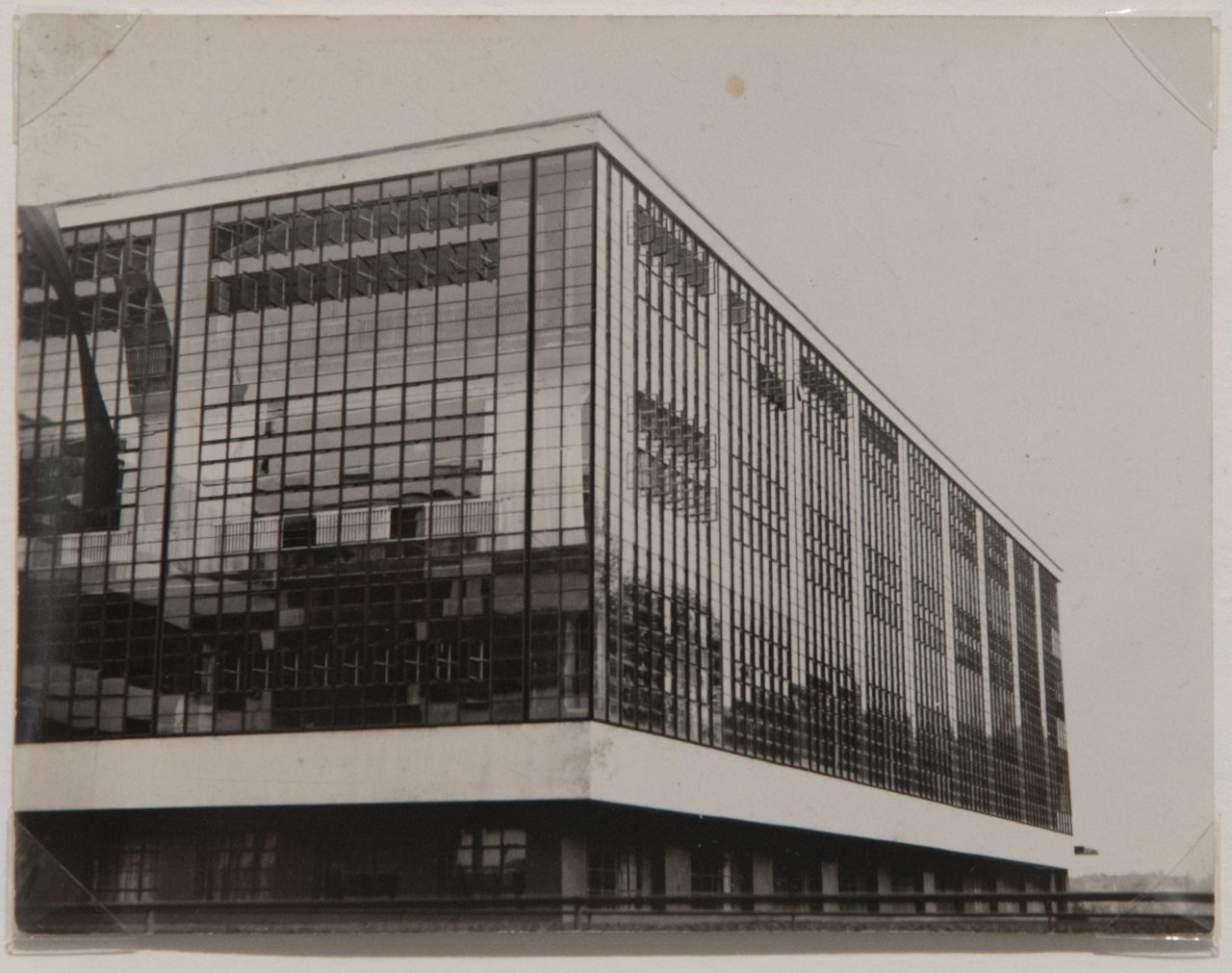
View of the workshop wing from the west. Iwao Yamawaki, Bauhaus, Dessau, 1930. Nihon University College of Art, College Archive and Museum, Tokyo.
Owing perhaps also to the way the light reflects off the glass, when seen from this side, the building looks like a block of glass. When considered this way, one could draw a parallel between it and Bruno Taut’s Glass Pavilion. This shot was by no means Yamawaki’s unique discovery, however; you can find many photographs from its time that are just like it. I think that what is captured by those shots that show the lettering and the contrast between the white and grey concrete and glass is a retrospective image of the Bauhaus, whereas back then, the building was probably perceived more as a glass mass that had risen out of the ground.
Gropius’ Resignification of Windows
Among the notable features of the Bauhaus Building are its large-scale glass curtain walls, which were the first of their kind. What enabled them to be realized at that particular moment in time, and how did they change the meaning of windows?
JM If you look at the pictures that Bauhaus-trained photographer Lucia Moholy took of the building during its construction, you can see what appears to be brickwork along the cast concrete slab at the base of the workshop wing. It turns out that hidden behind the modern design of concrete and glass, supporting it from the shadows, was this brick. As is true when realizing any innovative design, at first you have no choice but to make do with existing techniques and technology.
-
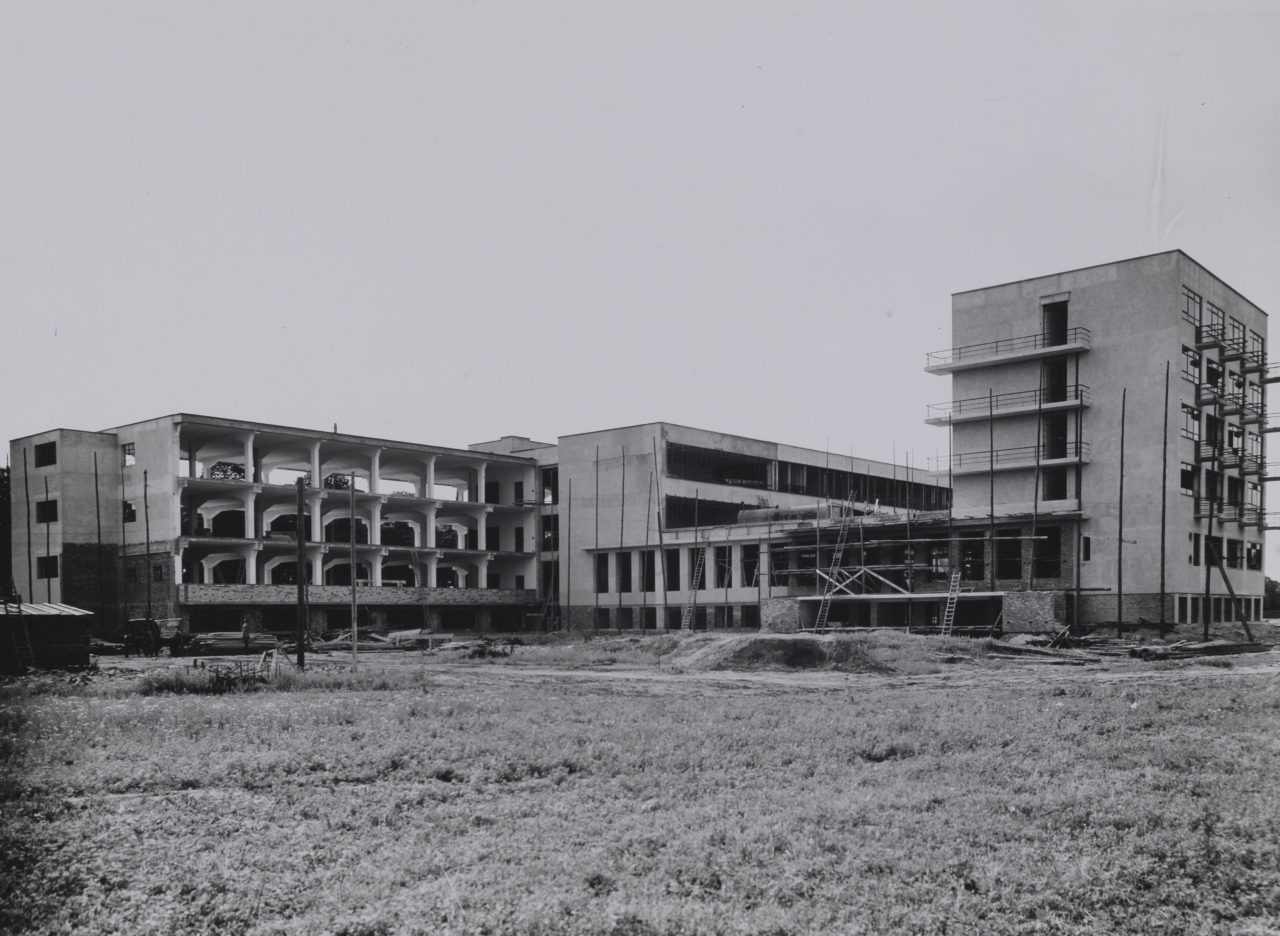
The Bauhaus Building under construction. Lucia Moholy, Bauhaus, Dessau, 1926.
I am not certain, but I think non-structural brick is commonly used as a filler in reinforced concrete construction in Europe even now. The interesting thing about the Bauhaus Building, however, is that the brick, which can be freely resized by changing the thickness of the joints, has been used to make the curtain wall sills, which the steel and glass components require to be very precise. Sealants probably were not as strong as they are today, so the fine-tune adjustments had to be made using brick and, of course, mortar.
No matter how novel a design is, it can only be realized if it is buildable. While the Bauhaus Building may not be a pure reinforced concrete building, the fact that the integrity of the design is not undermined but rather preserved through mixing in conventional construction methods should, if anything, be considered a testament to its excellence.
How does the mechanism that enables parts of the glass curtain wall to be opened and closed work?
JM It consists of a series of vertical-axis rotating windows, which you do not see too often in common applications. These windows are structured in such a way that you can open and close all of them simultaneously by pulling on a chain. It has that industrial feel of something you might find in a greenhouse.
HU The emergence of the curtain wall was very significant for the history of western architecture, which is built on a foundation of masonry construction. In the past, people would stack stones to make walls and create gaps in them to make windows. While walls served to bear loads, windows were freed from that role. It was clear where walls ended and where windows began. You could basically describe a building’s elevation as being made up of walls and windows.
-
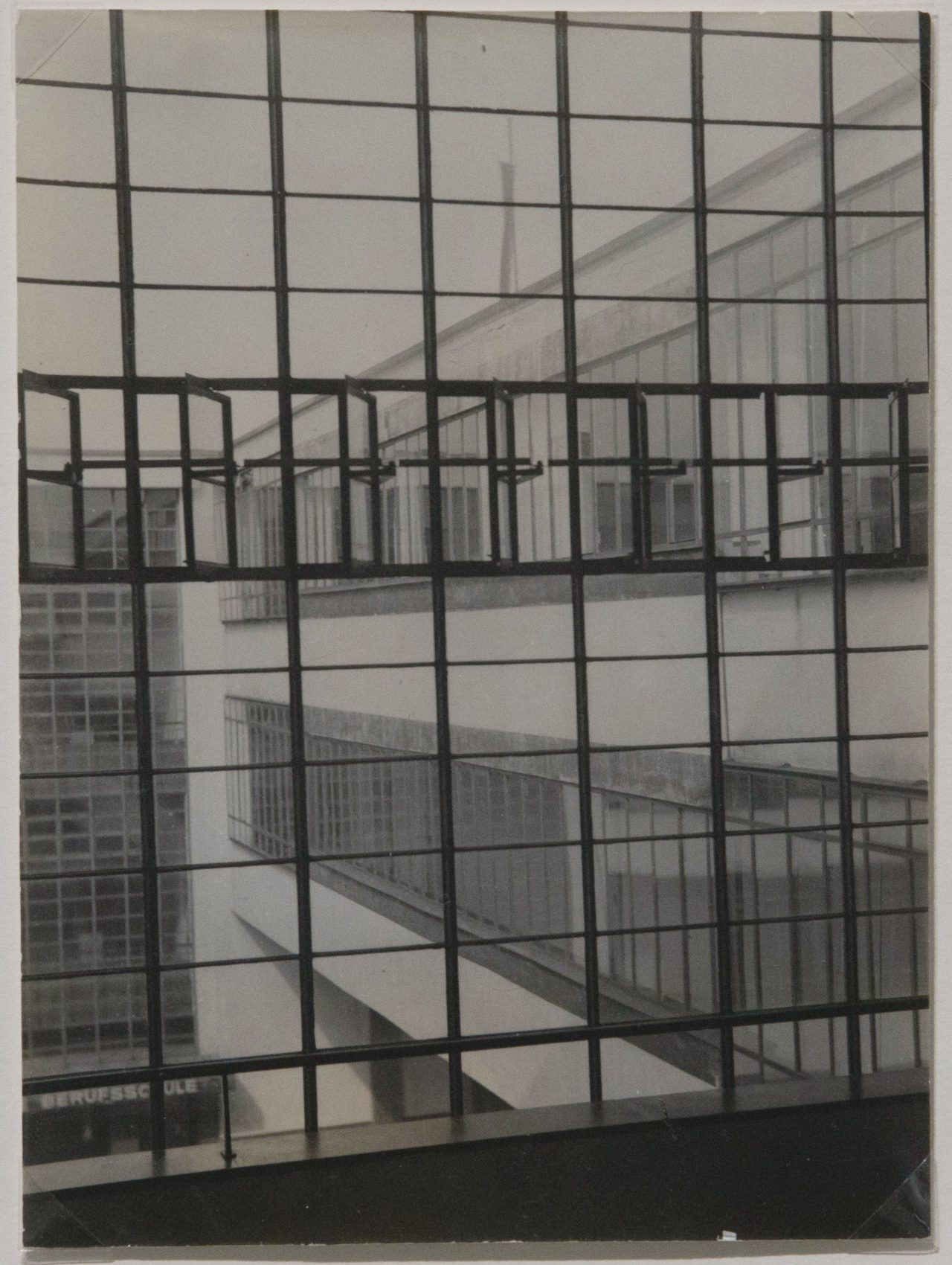
Iwao Yamawaki, Bauhaus, Dessau, 1930. Nihon University College of Art, College Archive and Museum, Tokyo.
However, in a glass curtain wall, that distinction is eliminated. You might say that the whole thing is a wall, as it literally is named, or you could say that the whole thing is a window. All that matters then is how you make its elevation behave with respect to air, light, and sightlines. For example, if it only has to let light pass through, you can make it a fixed window; if it has to provide ventilation, you need to make it operable; and if you want it to block sightlines, you can make it out of an opaque material.
In the case of the Bauhaus Building, these differences in behavior are apparent in the elevations of each of the wings. This is just a personal theory, but I believe Gropius thought of the workshop wing as a factory building. I say this because his aim for the Bauhaus was to combine a transformation of education with a transformation of manufacturing. The workshop, being the primary site of production, needed to be well lit, and this was why he employed those great glass walls.
As far as glass curtain walls are concerned, they had already appeared in Gropius’ earlier work, namely the Fagus Factory, completed in 1911, and the model factory that he designed for the Werkbund Exhibition held in 1914. The Bauhaus Building’s workshop wing can therefore be considered as a variant of those factories.
-
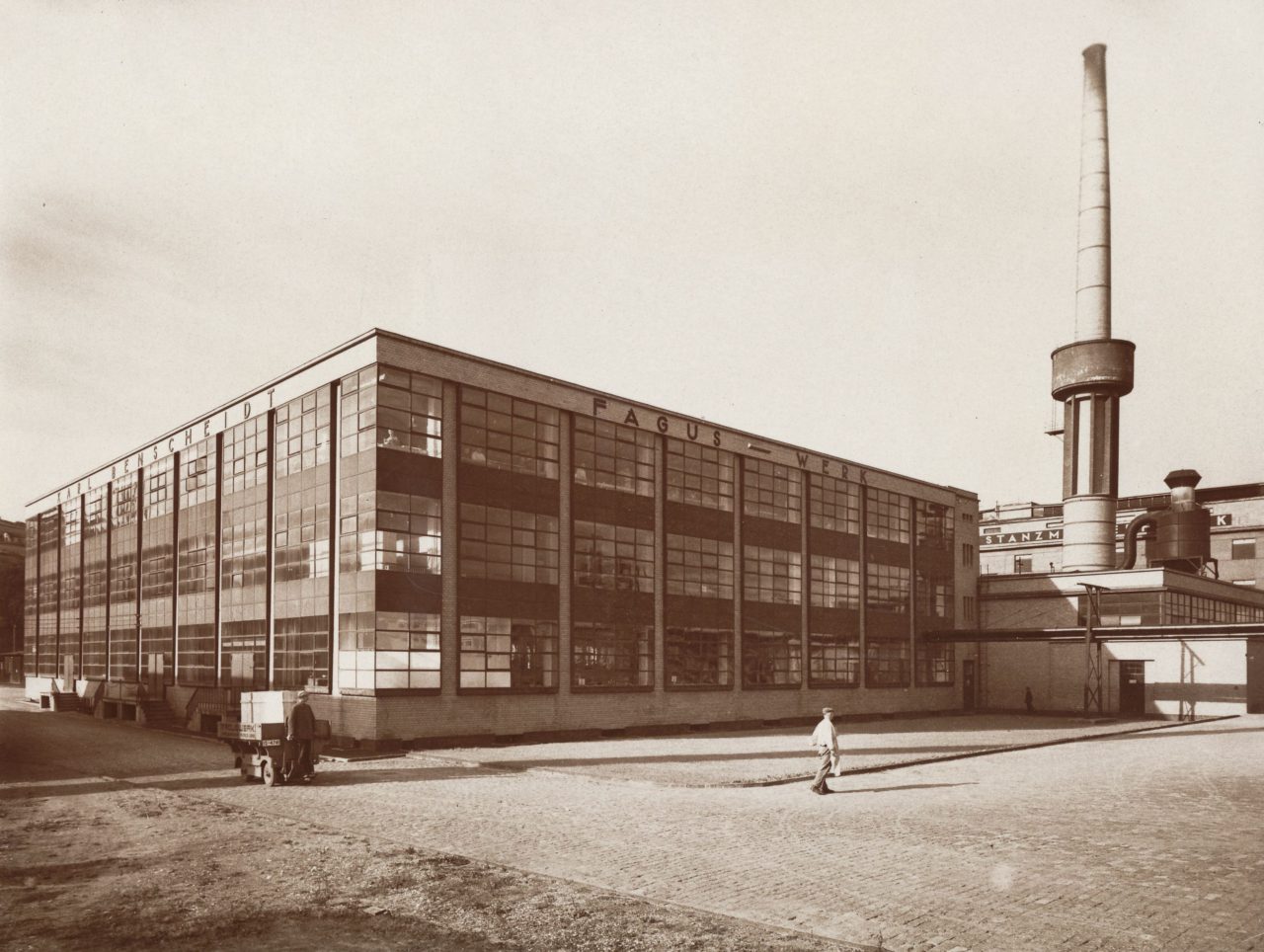
Walter Gropius and Adolf Meyer, Fagus Factory, 1911. © Edmund Lill.
Now, going back to the window-opening mechanism: it essentially works by converting the rotational motion of a chain-operated gear into linear motion to open and close multiple windows at the same time. The logic of mechanized mass production that Gropius upheld is manifested in it in two senses. Firstly, it tries to produce the greatest results with the least amount of effort by means of mechanization, and secondly, it is made in such a way that it can be mass-produced.
I am not sure how many windows it operates, but it allows you to rotate a good number of windows all at once with a single action. Because it is made of simple standardized components such as a chain, gear, rod, and slider, one can recreate that wall by combining these parts with steel frames and glass panes. In other words, the entire curtain wall system is a single integrated device that is also mass-producible.
Gropius was an early advocate of mass-produced prefabricated housing, and he even built a kit-of-parts home made of steel frames and infill panels in 1926–28 (House No. 17 at the Weissenhof Estate), so I think you can recognize this same logic of industrialized construction and mass production in the Bauhaus Building’s glass curtain walls and window-opening mechanisms. It appears that the Gropius of the 1910s and ’20s was trying to apply a new logic of production to architecture.
The Bauhaus as an Unfinished Project
JM When I talked to people who came out to see the Bauhaus Imaginista exhibition, I was often asked about what legacy the Bauhaus left for Japan and how its style has been passed down through the generations in a similar way to how Le Corbusier’s influence can be felt in the work of his Japanese apprentices, Kunio Maekawa, Takamasa Yoshizaka, and Junzo Sakakura.
However, one would think that the Bauhaus’ goal in striving for a world where design is based on the principles of so-called modernism would have been to do away with signature styles that can be attributed to any specific individual or entity. This being so, I do not think it is right to view the Bauhaus as a design style.
Though the Bauhaus did give rise to a wide variety of designs for furniture and other products, I believe that such things should be considered as transitional work or by-products of a trial-and-error process to achieve total works of art. The Bauhaus in Dessau should not be regarded as anything more than a midway point, so to speak.
-
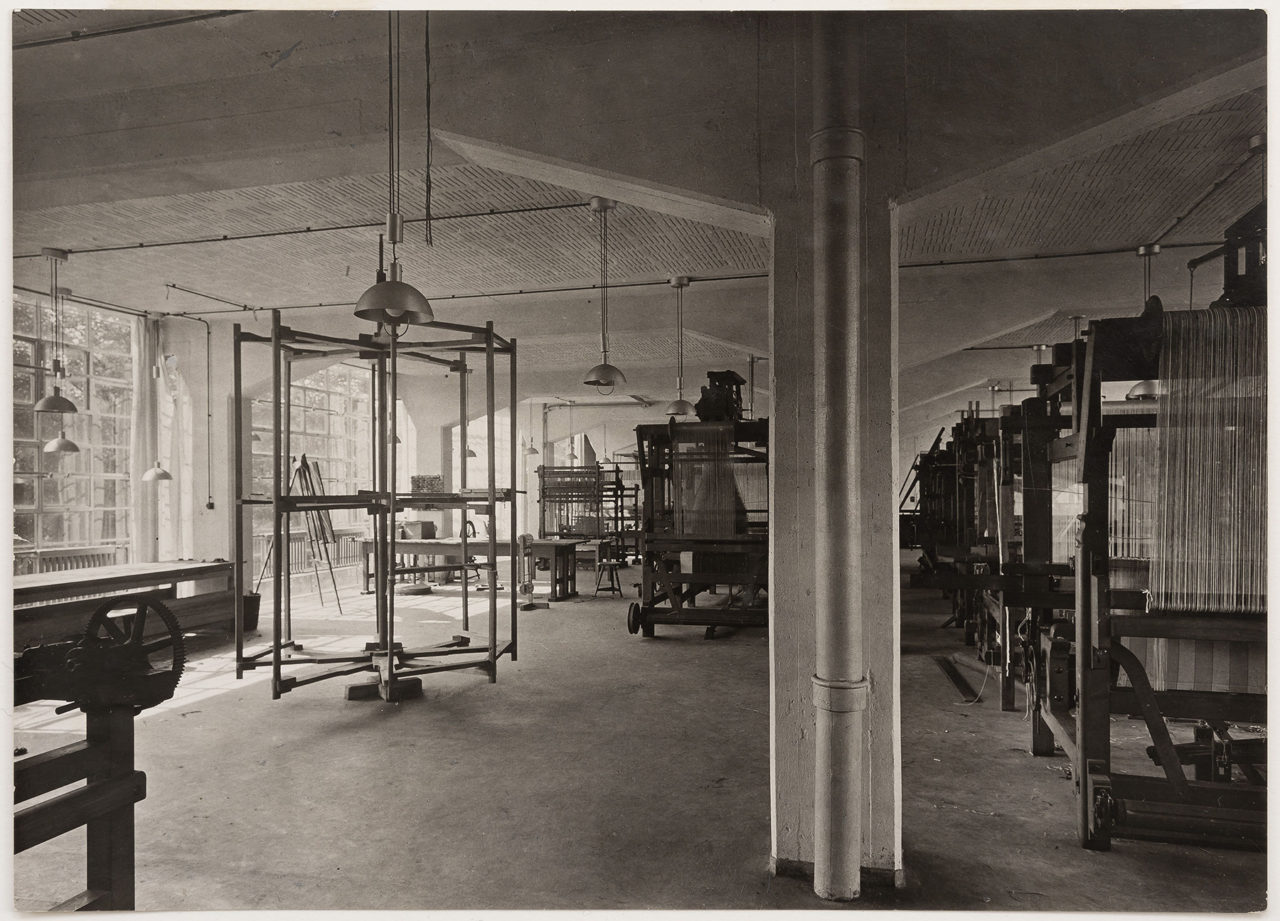
Weaving studio at the Bauhaus in Dessau, circa 1927.
© Stephan Consemüller. Courtesy of the Bauhaus-Archiv Berlin. G1643
HU While Le Corbusier maintained his stance as an independent artist throughout his life, this was not the case with Gropius. Following the Bauhaus’ closure, he moved to the US, where he continued his educational activities at Harvard before the war and his design activities as a senior member of an architecture firm called The Architects Collaborative after the war. In Japan, the firm is referred to by its abbreviations, “TAC”, and it developed many large-scale projects while upholding the idea of collaborative design, just as its name suggests.
Japan’s Encounter with the Bauhaus
How did information about the Bauhaus first make its way to Japan?
JM The Bauhaus was introduced in Japan for the first time in an article by art critic Sadanosuke Nakada in a 1925 issue of the magazine Mizue. At that point, it had already been six years since the Bauhaus’ founding. The school did not receive its first Japanese international student, Takehiko Mizutani, until 1927. However, various people seem to have visited the school around that time, including Sutemi Horiguchi, Wajiro Kon, and Goichi Takeda.
HU After that, in late 1929, two architecture magazines, Kenchiku Shinchō (The Architectural Current) and Kenchiku Kigen [Architectural epoch], published special feature issues on the Bauhaus in the same month. Of particular note is the Kenchiku Shinchō issue, which is quite extensive. Various people contributed texts, but the person who compiled the issue was Renshichiro Kawakita. When making it, he referenced materials on the Bauhaus gathered by the aforementioned Nakada. You could say that the issue was realized through the marriage of Nakada’s archival prowess and Kawakita’s curatorial prowess.
Mizutani, the Bauhaus’ first Japanese student, returned to Japan in January of 1930, so it was from that year that the Bauhaus’ ideas began to be disseminated in Japan by someone who experienced the school’s program firsthand. This began to be done systematically by the Seikatsu Kosei Kenkyusho [Life Composition Institute] from 1931. While this organization only introduced the Bauhaus’ ideas through one-off workshops and exhibitions, its activities were developed and sustained in a school format by the Shin Kenchiku Kogei Gakuin [Academy for New Architecture and Industrial Arts]. Both were headed by none other than Kawakita.
-
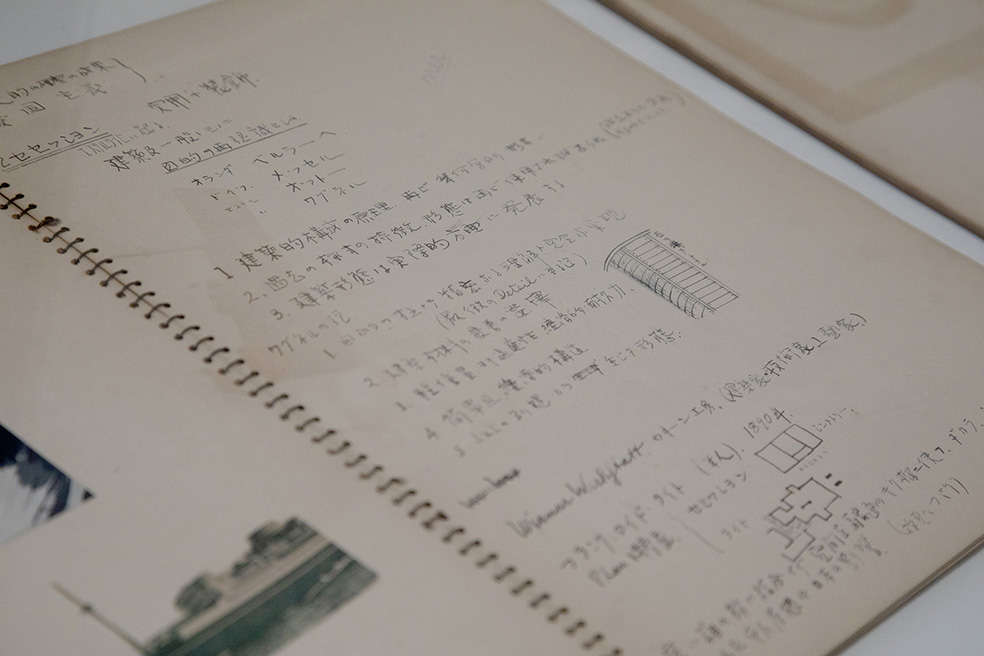
Architect Kiyoshi Seike’s notes from Taketani Mizutani’s seminars on the Bauhaus.
The exhibition focused on the Bauhaus-influenced Shin Kenchiku Kogei Gakuin and its director, Renshichiro Kawakita. Kawakita was also known for being the only Japanese entrant in the international competition for the Ukrainian State Theater in Kharkov, in which he won fourth place. What is his story?
HU It is difficult to describe him in one word. As far as his educational background is concerned, it can be said that he was a specialist in architecture. He graduated from the architecture department of the normal school affiliated with the Tokyo Higher Technical School, which was a predecessor of the Tokyo Institute of Technology.
After graduating there, he went on to become a teacher, only to quit after a year to work at the firm of Arata Endo, a former apprentice of Frank Lloyd Wright. But his time there was also short-lived. He continued to operate independently thereafter.
His freelance career can be broadly divided into three periods. In the first period, which began in the late 1920s, he presented designs for ambitious unbuilt projects while also penning numerous articles for various architectural magazines. The competition proposal for the theater in Kharkov was something that he developed at the very end of this period.
-
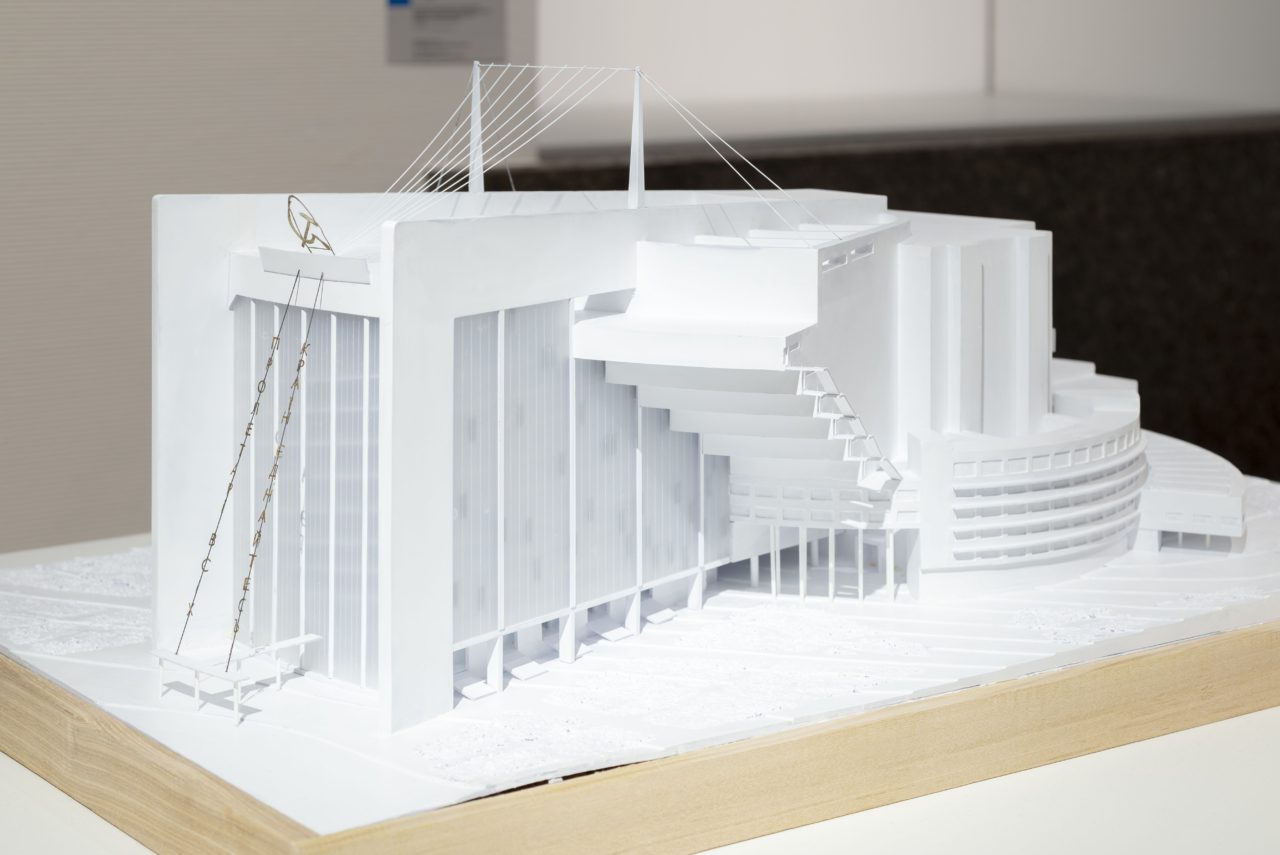
Model of Renshichiro Kawakita’s competition proposal for the Ukrainian State Theater in Kharkov. Recreated in 2018 by Haruya Susa (Zouzuo Model).
The second period began in the early 1930s, when he shifted his focus to design education. While the Bauhaus’ foundation course formed the basis of his approach, Kawakita’s goal was not to replicate it but to provide a more concrete design education that applied its teachings. However, he struggled to get the applied learning part to catch on. It was too advanced that it failed to attract students.
And so, he began applying the Bauhaus’ approach through his own personal activities. This led him to forge a new design field dealing with commercial environments. He called it “store performance studies”, and this was his focus during the third period.
For Kawakita, retail design was about exploring from a functionalist perspective how people, things, and money behave based on the way spaces are designed. You might say that he was a pioneer of what today we would call a management consultant or a space design consultant.
Composing Spaces to Unite Design and Management
Why did Kawakita become so interested in the Bauhaus?
HU Certainly to some extent he was just curious about the new European trend, but more importantly, I think he and other young Japanese architects and artists of the time sensed from the activities and development of the Bauhaus that it might offer hints for how they could tackle the problems that they were facing in Japan.
For Kawakita specifically, it was what likely caused him to stop producing his unbuilt projects, which basically were just utopic visions, and to turn his focus onto his design education work that dealt more broadly with not only architecture but all aspects of living. In other words, I think it made him realize that there is a concrete way to break open the closed, esoteric discourse that was being circulated through architectural magazines and exhibitions and to effect a change at a more general and fundamental level.
JM I am personally interested in the processes through which architectural information trickles down to members of the general public, such as the common housewife. There happen to be many books targeted for such audiences that were published from the Taisho era to the early Showa era, and while collecting them, I came across a book on Kawakita’s commercial interiors. As is true today, there has always been a disjuncture between architects and interior designers, and I also must have unwittingly made this arbitrary distinction, because I did not perceive Kawakita as an architect in that moment.
I think you can appreciate the breadth of Kawakita’s perspective from the fact that he managed to keep the Seikatsu Kosei Kenkyusho from developing a bias towards architecture despite bringing aboard a Bauhaus-trained architect. This, in a sense, made it even more Bauhausian than the Bauhaus.
-
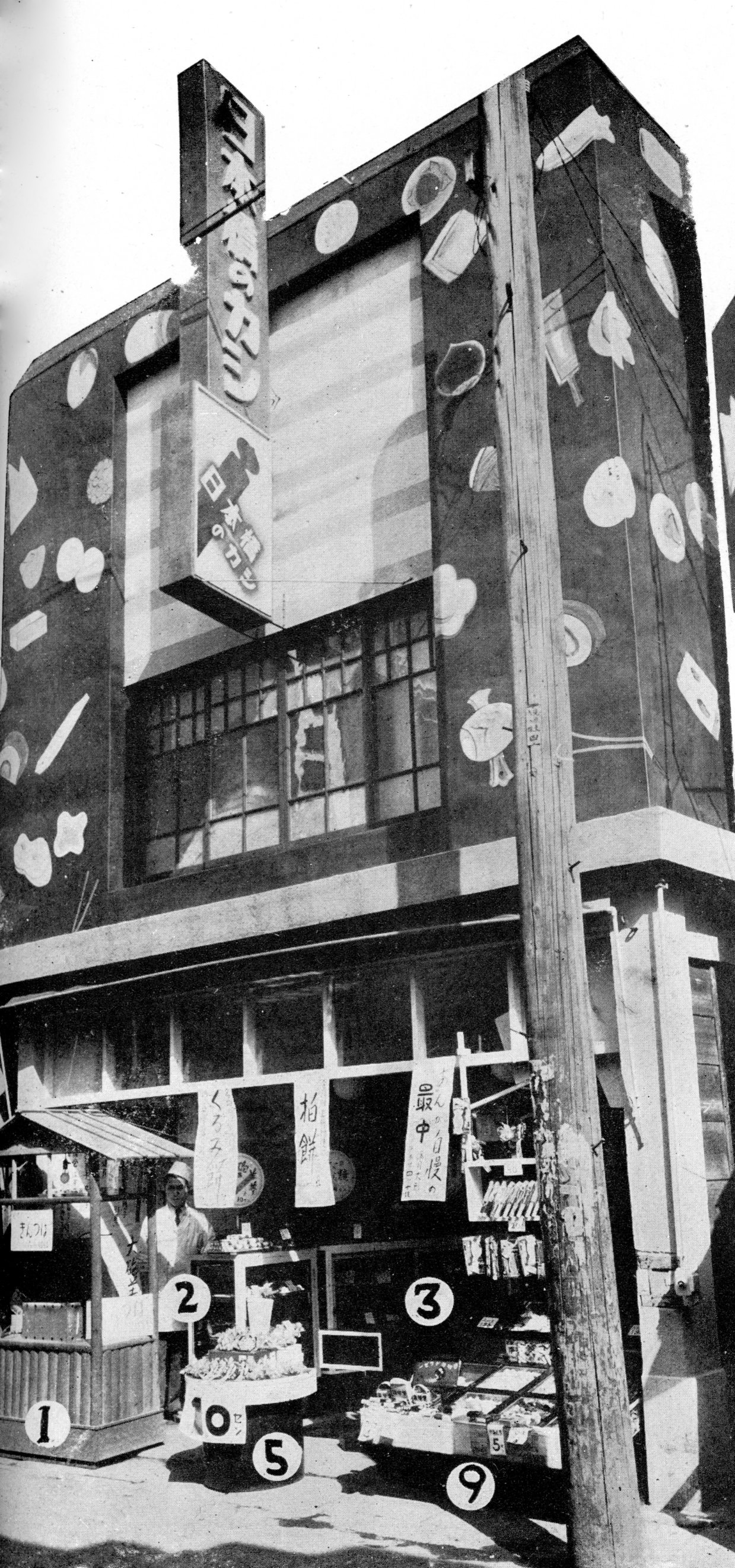
Confectionery store designed by Kawakita, circa 1936. Renshichiro Kawakita, Zukaishiki tenpo sekkei chinretsu zenshū [Complete Illustrated Collection of Store Designs and Displays, Vol. 1] (Tokyo: Monas, 1940).
We heard that Kawakita also wrote books on display windows.
HU Yes. The display window was a very novel, modern device. The twentieth century is often called the visual age. This is because it saw great advancements in photography, film, and printing technology, but perhaps more significant for urbanism and architecture was the rise of this spatial device called the display window. It can be discussed variously in the context of the expositions, the department stores that developed from them, and urban spaces such as galleria.
In the twentieth century, new modes of visual communication—specifically, displays such as exhibits, signs, and showcases—became the subject of focus both within and beyond the design field. When we speak of display windows today, we tend to think of store windows, but they really should be considered in the broader context of displays. At the Bauhaus, this idea of display was explored as a major theme along with production, and it was the same underlying principle of Kawakita’s store designs.
When you look at images of the stores that Kawakita designed, however, they seem far from Bauhausian. Works of the Bauhaus have that distinctive stylish look of modern design, but Kawakita’s work feels somewhat…unrefined.
The reason for this is that Kawakita had absolutely no interest in outward appearances. He believed that the way something looks—in other words, that which can be seen—should just be aligned with the taste of the masses, or the consumers. What he put his energy into designing was that which cannot be seen; that is, ways of guiding sight lines so that people will understand the products and ultimately want to buy them, and ways of structuring spaces to achieve this. In other words, he was interested in the way spaces are composed.
Looking Back at the Bauhaus After 100 Years
What do you think we should learn from the Bauhaus today, a century after its founding?
JM Many architectural educators came out to see our exhibition. When talking to them, I was told on multiple occasions that the programs at their universities are modeled after the Bauhaus’ curriculum. Evidently, my alma mater’s is, too. It seems that I unknowingly received a Bauhaus education (laughs).
Anyone who has studied architecture probably remembers taking classes where you were given an abstract problem that you had to develop into a form. Those design exercises apparently originated from the Bauhaus’ foundation course. The fact that we are unaware of this speaks to how thoroughly the Bauhaus’ teaching methods have already been assimilated in Japan.
Japanese architectural education is centered on tracing exercises, where students trace works that are considered masterpieces, and design assignments. I have always felt that it is quite a big ask to expect students to consciously connect these exercises to their design work on their own. Which brings me to ask: Did they really manage to achieve an ideal creative education that organically wove together theory and practice at the Bauhaus? This is what I have doubts about when I look at the work produced there.
I am sure people will argue otherwise, but could it be that the Bauhaus, however much it may have tried to synthesize theory and practice, did not manage to achieve that goal…? And that, despite this, today’s educational programs are continuing to blindly adhere to its approach that gives equal weight to these two things while believing that they will somehow be synthesized subliminally? So, before talking about learning from the Bauhaus, I believe that if schools are going to continue with their current programs, they need to search for methods to achieve that goal that our forerunners fell short of reaching.
HU No matter how avant-garde the Bauhaus may have been, it needs to be understood as something that emerged in response to the demands of its age. That is to say, it was nothing more than a product of its time, born out of a period when Europe had been trying to shed its agrarian roots and make the leap to a full-blown industrial society. So, what I believe we should do today is not so much learn from the Bauhaus but be wary of mythologizing it too readily. Or perhaps “brandifying” is a better word.
The problem with such discourse is that it tends to be promotional in nature. As such, it is obligated to make use of clear and simple messaging, which is circulated very easily in today’s world. The regurgitation of such discourse can lead to cementing a hackneyed notion of the Bauhaus. In this sense, I hope that the centennial will serve as an opportunity for counteracting such trends.
Hiromitsu Umemiya
Professor, Kobe University Graduate School of Human Development and Environment. Born 1958 in Kobe, Hyogo, Japan. Graduated from the architecture department at Kindai University. Former editor of Toshi Jūtaku at Kajima Institute Publishing. Holds a master’s degree from the Kyoto Institute of Technology and a PhD from Kobe University. Specializes in modern architectural history. Curatorial advisor of Bauhaus Imaginista (contributed the article “Naked Functionalism and the Anti-Aesthetic: The Activities of Renshichiro Kawakita in the 1930s” to the project’s website).
Jin Motohashi
Assistant curator, The National Museum of Modern Art, Kyoto. Formerly a research associate at Waseda University and managing director at the Meguro Architecture Laboratory. Holds a doctorate in engineering. Specializes in modern architectural history. Has also been conducting collaborative research focused on architectural drawings (with Yui Fushimi and Takahiro Oi) and German wartime wooden architecture (with Katsuya Fukushima, Hiroko Tominaga and Reijiro Sawaki). http://archive-tektur.net/
Exhibition:
Bauhaus Imaginista: Corresponding With
Venue: The National Museum of Modern Art, Kyoto, 4F Collection Gallery
Dates: August 4 – October 8, 2018
https://www.momak.go.jp/English/exhibitionArchive/2018/426.html
Header image:
View of the Bauhaus Building from the southeast. Lucia Moholy, Bauhaus, Dessau. VG Bild-Kunst, Bonn. Courtesy of the Bauhaus-Archiv, Bonn, and JASPAR, Tokyo.
